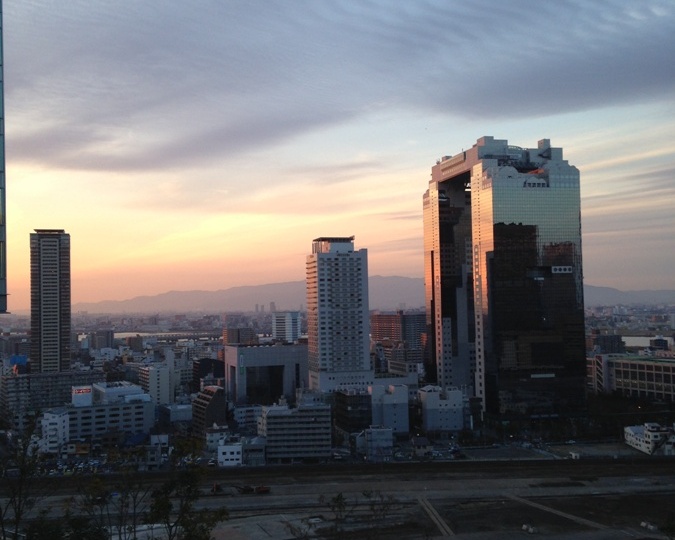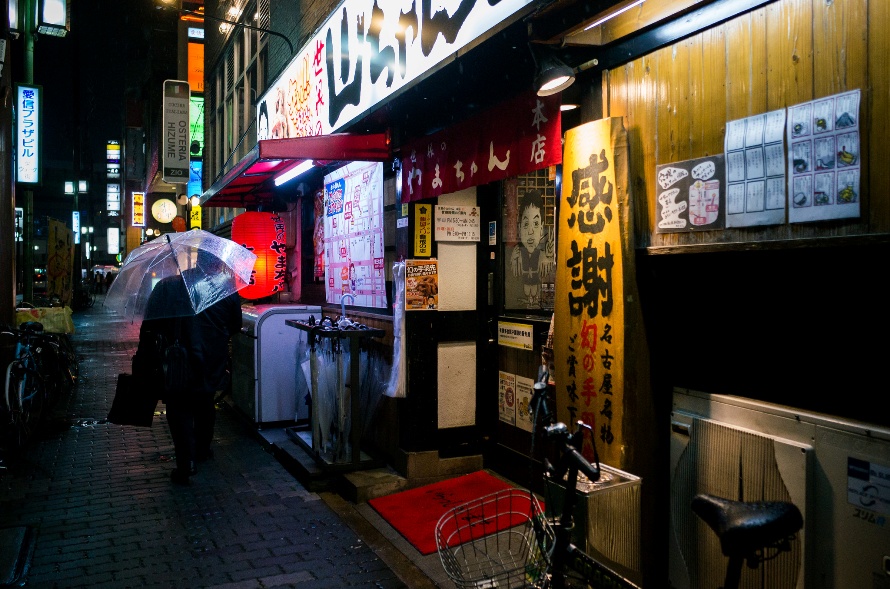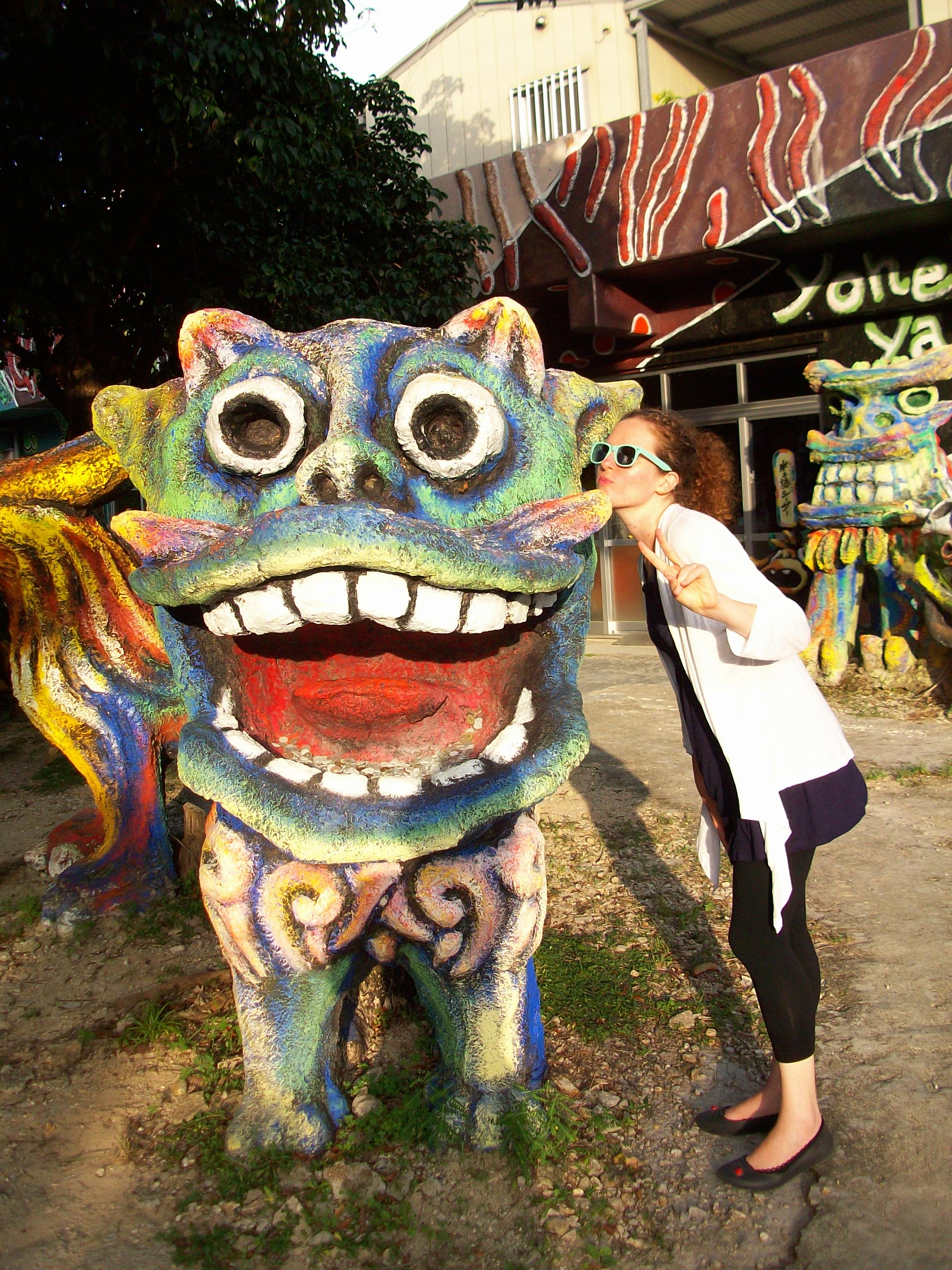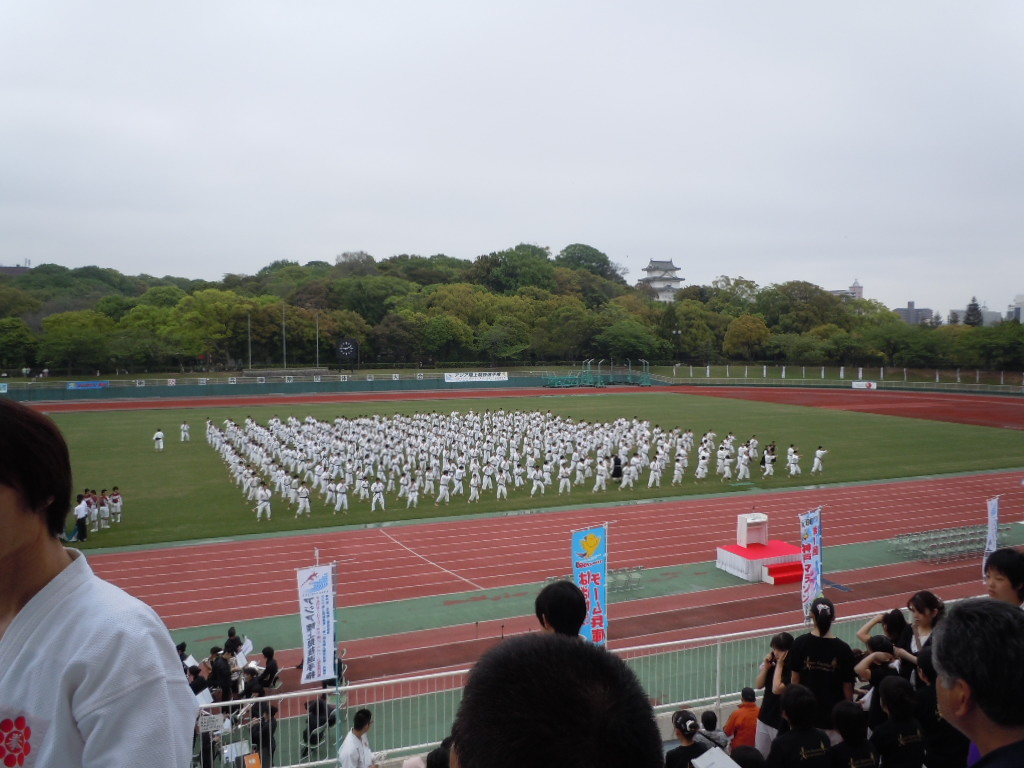Better Know a Ken: Ibaraki or Ibarrrrragi!
In Ibaraki, my home for the last 9 months, it’s both common and fun to say the prefecture’s name with a long, rolling “r†while switching the “k†for the “gâ€: “Ibarrrragi!†Despite the energetic name, many people may not know much about Ibaraki-ken. However, they might know our prefecture’s mascot, Mito Komon. Other than our being our cute, bearded prefectural cartoon character, he is a local historical figure and the star of the longest running Japanese drama of the same name. His popularity puts Ibaraki, a prefecture North-East of Tokyo, on the map for many.
The beloved Mito Komon is a character based on Tokugawa Mitsukuni, the 2nd Daimyo of Mito (our capital city) in the Edo era. This egalitarian leader lived in a manner similar to that of his people – choosing a small cottage in the woods instead of a luxurious castle. He worked his own rice paddy and even paid taxes like the local farmers. In his television drama, a disguised Mito Komon travels with two samurai side-kicks, seeking out injustice and fighting corruption throughout Japan.
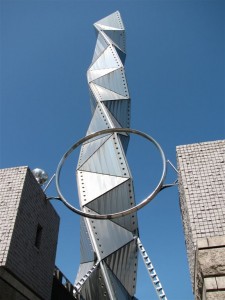 In his honor, Mito hosts a Mito Komon festival every summer. The festival includes a parade filled with dancing, elaborate floats, and good food. A “Mito Komon†makes an appearance, sporting his typical yellow hat and purple vest and thin, white beard. One of the first things I did as jet-lagged ALT was dance down the streets of Mito in the Mito Komon parade. Dressed in red and blue yukata, we newly-arrived gaijin were taught traditional Japanese dances. We were sweaty, unpracticed, uncoordinated, but happy, especially during the numerous “beer breaks.â€
In his honor, Mito hosts a Mito Komon festival every summer. The festival includes a parade filled with dancing, elaborate floats, and good food. A “Mito Komon†makes an appearance, sporting his typical yellow hat and purple vest and thin, white beard. One of the first things I did as jet-lagged ALT was dance down the streets of Mito in the Mito Komon parade. Dressed in red and blue yukata, we newly-arrived gaijin were taught traditional Japanese dances. We were sweaty, unpracticed, uncoordinated, but happy, especially during the numerous “beer breaks.â€
A snow of pink, white, and red petals can be seen floating from Kairakuen Park in Mito. It is one of the three most beautiful gardens in Japan, and it has more than 3 thousand types of plum trees. The blossoms are celebrated during the Mito Plum Festival held Febuary 20th to March 31st. At Kairakuen, you can take a boat ride on Mito’s Semba lake, feed the slightly scary black swans, or just lie under the cherry trees during hanami. You may be able to glimpse the Mito Art Tower above the cherry trees. This twisted, geometric landmark is an icon for the city. Riding an elevator to the top of the art tower and gazing over our capital is now, unfortunately, impossible, as the tower was structurally damaged during the Tohoku earthquake. Despite the damage, it still stands, defining our skyline.
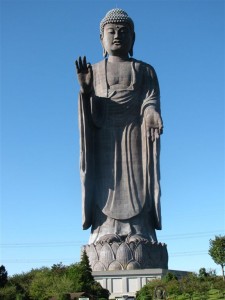 There is a Mito Komon statute covered in giant Chrysanthemums in the small town of Kasama. The town has a Chrysanthemum festival from October till November, where you can see our mascot in full bloom along with chrysanthemums the size of dinner plates. The festival is based around one of the three largest Inari shines in Japan. Kasama is also famous for pottery, so you can go shopping for some locally-made artwork or try your own hand at the craft in one of the many pottery studios.
There is a Mito Komon statute covered in giant Chrysanthemums in the small town of Kasama. The town has a Chrysanthemum festival from October till November, where you can see our mascot in full bloom along with chrysanthemums the size of dinner plates. The festival is based around one of the three largest Inari shines in Japan. Kasama is also famous for pottery, so you can go shopping for some locally-made artwork or try your own hand at the craft in one of the many pottery studios.
In Ibaraki’s Ushiku, you can view the world from inside the head of a Buddha. This bronze Buddha is Japan’s tallest standing Buddha statue. An elevator will take you up 120 meters. You can over-look the flower gardens and a nearby animal park.
“Ku be!†is “Let’s eat!†in Ibaraki-ben. While at the Mito Komon festival or anytime during your Ibaraki sightseeing, you can sample our famous food. Ibaraki is known for its tender Hitachi beef, green-colored Hitachi Aki soba, and melons – we are the largest melon producer in Japan. Also, the Okukuji area is famous for apples. You can try a delicious, fresh apple or soak with then in a “ringo-buro†(apple-filled) onsen. Adding apples to the hot volcanic water is supposed to give you a good dose of vitamins, although it may give you the feeling of soaking in warm apple cider.
The infamous natto is Ibaraki’s stringy, stinky specialty. Whether you love natto or hate it, I suggest you give it a try if you are in Ibaraki. You never know. You might find that you like it. If not, well, just say, “Shanme!†(“It can’t be helped!†in Ibaraki-ben).
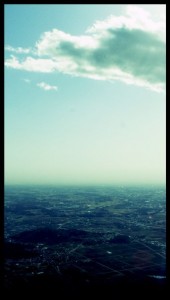 Nothing is more satisfying than slurping ramen in a revolving restaurant on top of our Mt. Tsukuba after a challenging climb. The mountain is the subject many local legends. According to folklore, a deity came from the heavens and asked Mt. Fuji and Mt. Tsukuba for shelter. Mt. Fuji, in its pride and arrogance, did not think it needed the god’s blessing, so it refused. Mt. Tsukuba, on the other hand, welcomed the god, and in return, the god blessed the mountain. So today, Mt. Fuji is a barren mountain, and Mt. Tsukuba is a mountain full of life. Beautiful forests of cypress trees and red pines cover our “purple mountain.â€
Nothing is more satisfying than slurping ramen in a revolving restaurant on top of our Mt. Tsukuba after a challenging climb. The mountain is the subject many local legends. According to folklore, a deity came from the heavens and asked Mt. Fuji and Mt. Tsukuba for shelter. Mt. Fuji, in its pride and arrogance, did not think it needed the god’s blessing, so it refused. Mt. Tsukuba, on the other hand, welcomed the god, and in return, the god blessed the mountain. So today, Mt. Fuji is a barren mountain, and Mt. Tsukuba is a mountain full of life. Beautiful forests of cypress trees and red pines cover our “purple mountain.â€
The revolving ramen restaurant is between the peaks of Mt. Nantai in the West at 871 meters high and Mt. Nyotoi in the East at 877 meters high. It was once said that the two peaks, as husband and wife, gave birth to gods or even Japan itself. They were worshiped in religious ceremonies. Now from the mythical origin of Japan, over your bowl of ramen, you can view the entire city of Tsukuba from the sacred peaks. From the top, you can catch glimpses of nearby Tokyo, or even see all the way to Mt. Fuji. From October to February you can take a cable car up the mountain for a “Star Dusk Cruise.†You can walk around the mountain and take in the night sky high above the lights of Tsukuba city.
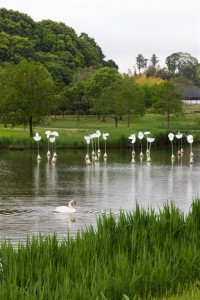 There is a saying about travel, “Abroad to see wonders the traveler goes and neglects the fine things which lie under his nose.†Often the best places to experience the “real Japan†are those far from the treks of tourists and crowds with hoisted cameras. So, if you are ready to see off-tour Japan, stop by Semba lake or dance in the Mito Komon Festival with a beer in hand. Who knows what fine things you will discover?
There is a saying about travel, “Abroad to see wonders the traveler goes and neglects the fine things which lie under his nose.†Often the best places to experience the “real Japan†are those far from the treks of tourists and crowds with hoisted cameras. So, if you are ready to see off-tour Japan, stop by Semba lake or dance in the Mito Komon Festival with a beer in hand. Who knows what fine things you will discover?

